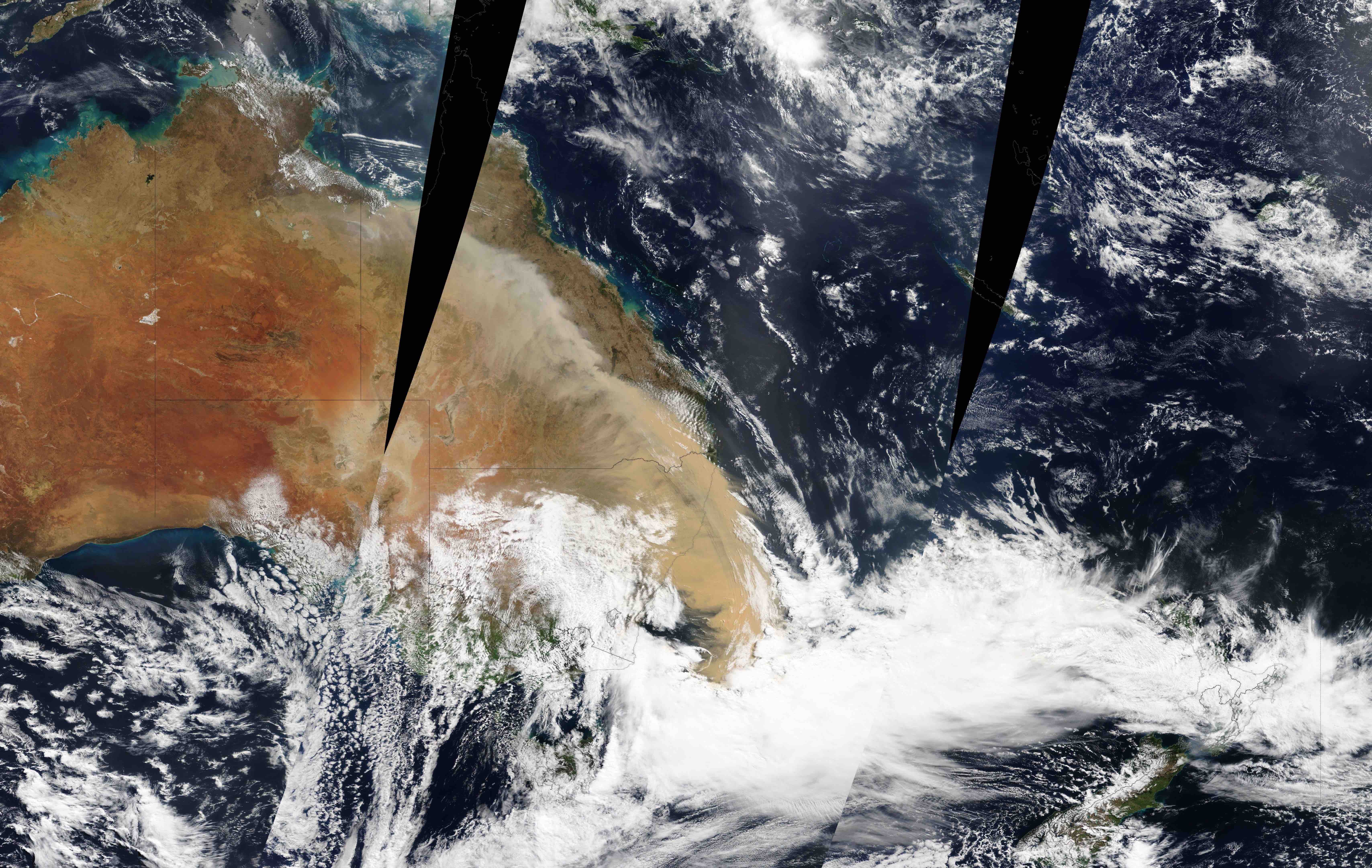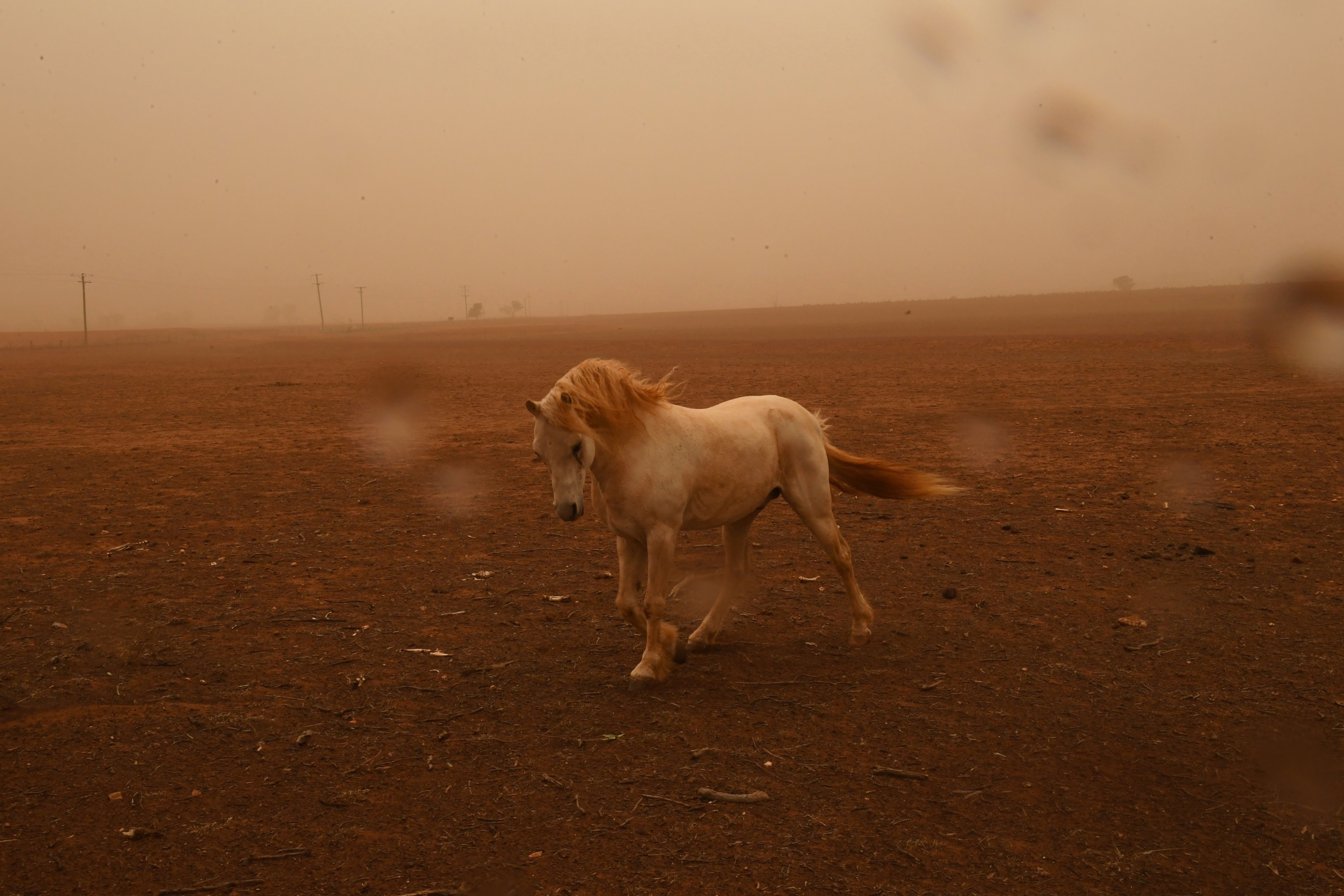Ten years on from Australia's 'Red Dawn' dust storm

It's been ten years since Sydney's infamous 'Red Dawn' dust storm, an event that ejected over 2 million tonnes of dirt into the Pacific Ocean. Now, a decade on from one of Australia's worst known dust storms, the landscape may be ready to produce another big one during the months ahead.
Sydney's Red Dawn
A strong cold front swept across southeastern Australia in late September 2009, towards the end of the Millenium Drought. This frontal system whipped up masses of dry topsoil as it ploughed across the parched outback.
This system caused a wall of dust to sweep across eastern Australia from 22nd to 24th September in 2009, affecting multiple states and territories.
Sydney was choked by the thick dust on Wednesday, 23rd September, reducing visibility to 400 metres and blanketing the city with dirt. This event also affected Canberra and Brisbane.
According to the CSIRO, the estimated cost of the September 2009 dust storm was $299 million. Most of this cost was attributed to household cleaning and associated activities.
NASA's Terra satellite captured a series of spectacular images throughout this event, one of which showed a dust plume stretching from northern Queensland down to the Tasman Sea.

Image: An image from NASA's Terra satellite showing a large dust storm over eastern Australia on Wednesday, September 23rd, 2009.
The dust plume grew to more than 3,000 kilometres in length and is estimated to have ejected 2.5 million tonnes of sediment off Australia's east coast. Most of this topsoil ended up in the Pacific Ocean and some settled in New Zealand. This was Australia's largest loss of soil ever reported from a dust storm.
What made the 2009 dust storm so big?
Dust storms are a common phenomenon in the Australian outback. They occur when strong winds blow over areas with dry and exposed topsoil. Dust storms happen every year, but they are exacerbated by drought.
While some dust storms are brief and localised, others can create towering walls of dirt that stretch for thousands of kilometres across continents and oceans.
One of the key features that determine the scale of a dust storm is how unstable the atmosphere is while they occur.
When the wind kicks up dust, the atmosphere needs to be unstable for this dirt to keep rising into the sky. A stable atmosphere will keep the dust relatively close to the ground, limiting its spread.
The cold front that caused the Red Dawn dust storm in 2009 also produced severe thunderstorms in multiple states and territories, which featured heavy rain and large hail.
Will Red Dawn happen again?
Spring is typically when the atmosphere becomes more unstable in eastern and southeastern Australia, as cold air moving up from the Southern Ocean clashes into warmer air sitting over the continent. These contrasting air masses lead to increasingly turbulent weather, which can exacerbate bushfires and dust storms.
According to Dustwatch Australia, dust storms are most common in large parts of central and eastern Australia during spring and summer. Many areas have a noticeable uptick in dust storm frequency around September or October, including Canberra, Sydney and Brisbane.
In addition to the normal prevalence of dust storms at this time of year, much of southeastern Australia has also entered spring amid one of the region's worst droughts on record, with vast swathes of dry topsoil currently exposed to the elements.
A number of dust storms have already occurred in recent weeks, including one that swept through farms, towns and even some ski resorts in NSW on Saturday.

Image: A dust storm sweeps through Dubbo, NSW on the weekend. Source: Nick Moir/SMH
Australia's official seasonal outlooks do not provide any information regarding the likelihood or severity of dust storms. However, all of the ingredients are in place for dust storms to proliferate during the next few months.
It's not possible to predict whether any individual location will be hit by a thick dust storm until an active cold front starts to pick up sediment from the Australian outback. Be sure to keep an eye on your daily forecasts for any mentions of airborne dust.
You can find out how to reduce the impact of dust storms on your health by visiting: https://www.health.nsw.gov.au/environment/factsheets/Pages/dust-storms.aspx